How to Choose the Perfect Guide for the Langtang Valley Trek?
There is an easy way to choose the perfect guide for the Langtang Valley Trek with us at High Pass Adventure. Choosing the right guide for the Langtang Valley Trek can make a huge difference in your overall experience, and it’s easy when you work with High Pass Adventure. As a locally based trekking organizer in Nepal, we have a team of experienced local guides who are licensed by the Government of Nepal, fluent in English, and highly approachable. Our guides are friendly, patient, and dedicated to making your trek safe, enjoyable, and memorable. You can review the detailed profiles and biodata of our guides on our website to choose the one that best fits your preferences and needs.
With a professional guide from our team, you gain more than just navigation support. They provide cultural insights, introduce you to Sherpa and Tamang communities, and give authentic experiences beyond the typical tourist path. Our guides are also physically fit, trained in recognizing altitude sickness, and equipped to handle emergencies, ensuring your trek is safe and stress-free. This combination of expertise, local knowledge, and care guarantees a truly rewarding Langtang Valley trekking experience at an affordable cost.
Why Hire Only a Guide and Porter for the Langtang Valley Trek?
Hiring only a guide and porter for the Langtang Valley Trek is a cost-effective and flexible way to experience the trekking. A professional guide ensures your safety, provides valuable insights into the local culture, and helps you navigate the trail without stress. Meanwhile, a porter carries your heavy backpack, allowing you to trek comfortably and fully enjoy the stunning landscapes of Langtang.
Unlike full package tours, hiring just a guide and porter gives you the freedom to choose your own accommodations and meals along the way, keeping expenses lower while still having essential support. This option is perfect for trekkers who want independence, budget-friendliness, and the comfort of local expertise without the need for an all-inclusive package.
Side Trips during the Langtang Valley Trek with a Hired Guide
There are many side trips during the Langtang Valley Trek that can be easily missed without a guide. Therefore, hiring a professional guide is important to explore these places fully.
Kyanjin RI – 4400 is lower view point and 4770 is higher view point
Kyanjin Ri (4,400m lower viewpoint and 4,770m higher viewpoint) is a popular hike from Kyanjin Gompa in the Langtang Valley. Both viewpoints offer breathtaking panoramic views of the Langtang Himalayas, glaciers, and valleys. The lower viewpoint takes about 3 hours round trip, while the higher one takes around 5 hours. It’s best to start early to avoid afternoon clouds, dress warmly in layers, carry water and snacks, and hike steadily to adjust to the high altitude.
Tserko RI – 4980 meters
Tserko Ri (4,980m) is one of the most rewarding day hikes from Kyanjin Gompa (3,870m) in the Langtang Valley. The hike takes 4–5 hours to ascend and 3 hours to descend, with a steep but non-technical trail. It offers 360° views of Langtang Lirung, Dorje Lakpa, Gangchempo, glaciers, and, on clear days, Shishapangma. Start early, wear warm layers, carry water and snacks, and use trekking poles for a safe and enjoyable hike.
Kyanjin Monastery and Cheese Factory in Kyanjin Gompa
Kyanjin Gompa offers two must-visit spots: Kyanjin Monastery and the Cheese Factory. The 700-year-old monastery, rebuilt after the 2015 earthquake, is a spiritual hub for Tamang and Sherpa communities, set against Langtang Lirung’s snowy peaks. Nearby, the Kyanjin Cheese Factory produces fresh yak and dzo cheese, with summer being the best time to visit for tasting and observing production.
Best Time to Hire a Guide for the Langtang Valley Trek
Hiring a guide for the Langtang Valley Trek is especially helpful during the off-season, such as winter and summer, when weather conditions are less favorable and fewer trekkers are on the trail, making it more challenging to navigate and find good photography spots. Guides ensure your safety, provide cultural insights, navigate the trail efficiently, and enhance your overall trekking experience. The best trekking seasons are spring (March to May) and autumn (September to November), when weather is stable, trails are accessible, and visibility is clear. During these peak months, it is easier to find accommodations, navigate the trail, and capture stunning photographs, so no need the guide.
Langtang Valley Trek Difficulty
The Langtang Valley Trek is considered a moderately difficult trek. While it may not be as challenging as some of the higher altitude treks in the region, it still requires a good level of fitness and stamina.
The trek usually starts from Syabrubesi, which is located at an altitude of around 1,550 meters (5,085 feet). The highest point reached during the trek is Kyanjin Ri, which stands at approximately 4,773 meters (15,658 feet). The trek involves ascending and descending various terrains, including forested areas, rocky trails, and some steep sections.
One of the factors that can make the trek challenging is the altitude. Altitude sickness can affect trekkers as they ascend to higher elevations. It's important to acclimatize properly, take regular breaks, and drink plenty of fluids to stay hydrated.
Weather conditions can also add to the difficulty level. The Langtang region experiences different seasons, and the weather can be unpredictable. It is advisable to trek during the best seasons, which are spring (March to May) and autumn (September to November), when the weather is generally more stable.
While prior trekking experience is not mandatory, being physically fit and having some hiking experience will certainly help. Regular cardiovascular exercise and strength training before the trek can improve your endurance and make the trek more enjoyable.
It's recommended to trek with an experienced guide who is familiar with the region. They can provide valuable guidance, ensure your safety, and assist you throughout the journey.
Overall, the Langtang Valley Trek is a rewarding experience, but it's important to be prepared physically and mentally to overcome the challenges it presents.
Travel insurance and insurance policy for Langtang Valley Trek
Trekking in Nepal offers a wide range of difficulty levels in the Himalayas, from easy to challenging. However, due to the changing climate in the Himalayas, there is an increased risk of high altitude sickness and other potential mishaps.
The Langtang Valley Trek is located in the Nepal Himalayas at high altitudes between 1,600 to 5,000 meters. When planning a trek to the Langtang Valley, it is necessary to have comprehensive travel insurance. In the event of an accident that requires medical attention or evacuation, the costs associated with returning to a city and receiving treatment can be significant and very expensive. Therefore, it's crucial to ensure that your insurance covers expenses such as air ambulance services, medical care, and other travel-related risks like delayed international flights and lost or stolen baggage. Your insurance policy should also cover your entire itinerary while visiting Langtang Valley, including hikes above 5,000 meters.
If your insurance policy doesn't cover hikes around 5,000 meters, you will be responsible for any unforeseen costs incurred during the Langtang Valley Trek in Nepal. As part of the booking process for Langtang Valley trekking, you must provide a copy of the certificate from your comprehensive travel insurance policy to High Pass Adventure. This ensures that proper precautions are taken to address any potential emergencies during your Langtang trekking experience in Nepal.
Acclimatization for Langtang Valley Trek
High altitude sickness is a common issue in the high Himalayan areas as you ascend to higher elevations. It can onset rapidly, but its symptoms are preventable. Langtang Valley Treking route is between 1600 to 5000 meters so trekking above three thousand meters, it's essential to take defense against altitude sickness. So, Acclimatization is necessary for preventing high altitude sickness (also known as Acute Mountain Sickness or AMS) during the Langtang Valley Trek. Acclimatization is the process by which the body gradually adapts to changes in its environment, particularly to lower oxygen levels at higher altitudes.
Guidelines for Acclimatization
- Gradual Ascent: Ascend slowly to allow your body time to adjust. A general guideline is not to ascend more than 300-500 meters (1,000-1,640 feet) per day once above 3,000 meters (9,842 feet).
- Climb High, Sleep Low: Trek to a higher altitude during the day and then descend to a lower altitude to sleep. This helps your body adjust to higher altitudes while avoiding the stress of sleeping at high altitudes.
- Acclimatization Days: Include rest days in your itinerary to allow your body to acclimatize, especially after significant altitude gains.
- Stay Hydrated: Drink plenty of fluids to stay hydrated, which helps your body acclimatize more effectively. Avoid alcohol and caffeine, which can lead to dehydration.
- Avoid Overexertion: Trek at a steady pace and avoid excessive physical exertion, especially in the early stages of your trek.
- Eat a Balanced Diet: Consume a diet rich in carbohydrates, which can help maintain energy levels and aid in acclimatization.
- Medications: Some trekkers take acetazolamide (Diamox) to help speed up the acclimatization process. Always consult a healthcare professional before taking any medication.
High Altitude Sickness Information for Langtang Valley Trek
High Altitude sickness, also known as Acute Mountain Sickness (AMS), is a condition that can occur when hiking or ascending to higher elevations. It's important to be aware of its symptoms because they can develop rapidly. The main cause of altitude sickness is the decrease in air pressure as you ascend to higher altitudes. Your body needs time to adapt to this shift in air pressure, as there is less oxygen available at higher elevations.
High Altitude Sickness (AMS): This occurs when your body doesn’t acclimatize properly to lower oxygen levels at higher altitudes. Symptoms include headache, nausea, dizziness, fatigue, shortness of breath, and loss of appetite.
To prevent high altitude sickness, it is important to ascend slowly, allowing your body time to adjust to the changing altitude. Hiring experienced guides for your Langtang Valley Trek is also highly recommended. Guides with experience in high-altitude treks can help recognize symptoms early and take necessary actions.
About Diamox — a medicine for high altitude sickness
Diamox is the brand name for Acetazolamide, a medicine that helps prevent and treat altitude sickness (Acute Mountain Sickness, AMS). When trekkers ascend to higher elevations, oxygen levels decrease. Taking Diamox helps your body adjust faster to high altitudes by stimulating deeper and faster breathing, allowing you to take in more oxygen. Diamox works by making your blood more acidic, which signals your body to breathe faster at high elevations. This helps reduce symptoms such as headaches, nausea, and dizziness.
Based on our experience and advice from our altitude doctor, if trekkers have previous high-altitude trekking experience (around 4,000 to 5,000 meters) in Nepal, there is usually no need to take Diamox. However, if trekkers are trekking at these altitudes for the first time, it is recommended to start taking half a tablet of Diamox from the first day of the hike.
For example, all trekking route in Nepal, where the maximum elevation is 4,500 to 5500 meters, it is advisable to start taking Diamox from the first day of the trek. After taking Diamox, some people may experience side effects such as tingling sensations in the skin. Therefore, it is important to drink at least 4 liters of water per day while trekking and taking Diamox.
Important Notes
- Diamox is not a cure — it just helps prevent or lessen AMS.
- Stay hydrated — Diamox acts as a diuretic (you'll pee more!).
- Common side effects: Tingling in fingers, frequent urination, slight taste changes.
- Always ascend slowly, even with Diamox.
- Never use Diamox as an excuse to climb too fast!
How much should we Tip to Guide and Porter in Langtang Valley Trek?
Tipping your guide and porter on the Langtang Valley Trek is an expected way to show appreciation for their hard work, support, and local expertise. While the amount is flexible, it typically depends on the trek’s duration, service quality, and your satisfaction. It is recommended to gather all team members (guide, porter, assistant guide) together to distribute the tip. Tips are generally given in cash, preferably in US dollars or Nepalese rupees, and using small denominations makes distribution easier.
While a common guideline is to tip around 10% of the total payable amount, for treks where you hire only a guide and porter, the tip may be higher depending on the quality of service provided.
Recommended tipping amounts are:
- Guide: $12–$15 per day
- Porter: $8–$10 per day
Packing List for Langtang Valley Trek
Packing for the Langtang Valley Trek requires careful consideration to ensure you have everything you need while keeping your pack as light as possible, so only bring the necessary things. You can also rent or purchase trekking gear in Kathmandu if you don't have everything you need. Here's a recommended packing list:
Clothing:
- Lightweight trekking pants
- Long-sleeved shirts
- T-shirts
- Down jacket
- Waterproof and windproof jacket
- Waterproof and windproof pants
- Thermal base layers (tops and bottoms)
- Warm hat and gloves
- Sun hat or cap
- Sunglasses with UV protection
- Hiking socks
Footwear:
- Sturdy hiking boots
- Camp shoes or sandals
- Micro Crampons
- Gaiters
Accessories:
- Daypack
- Trekking poles
- Headlamp or flashlight with extra batteries
- Power Bank (Portable charger or solar charger)
- Water bottle or hydration system
- Trekking towel
- Personal toiletries (toothbrush, toothpaste, biodegradable soap, etc.)
- Sunscreen and lip balm with SPF
- Personal first aid kit
Other Gear:
- Sleeping bag (comfortable to 10°C)
- Backpack rain cover
- Duffel bag or backpack for porters to carry your gear
- Personal identification and travel documents
- Travel insurance policy
- Snacks and energy bars


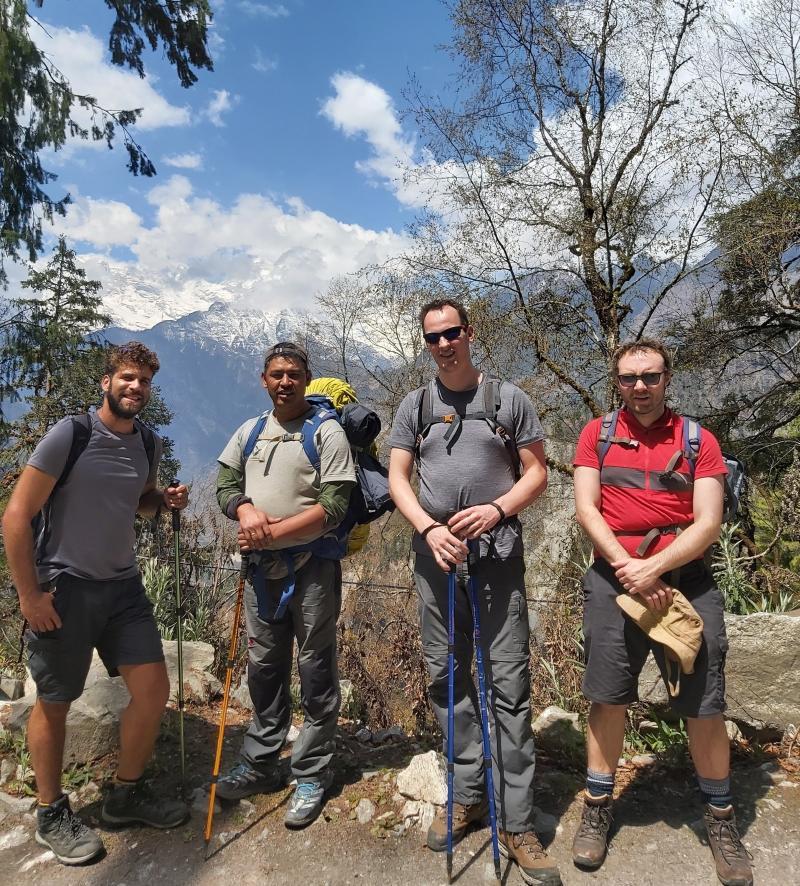

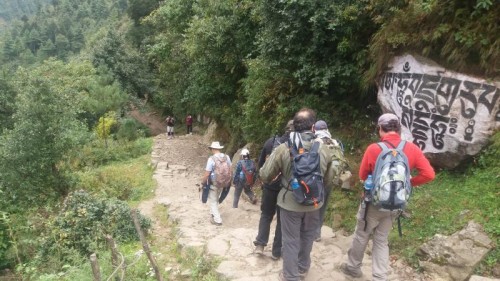

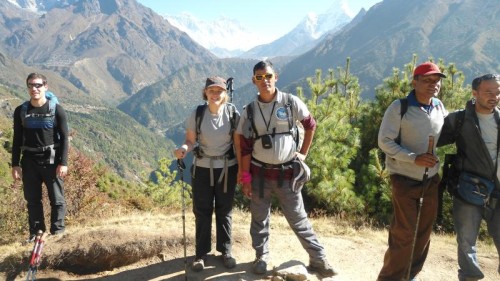

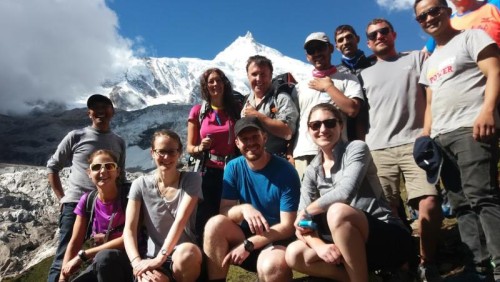
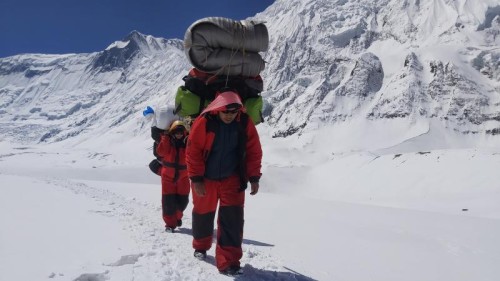


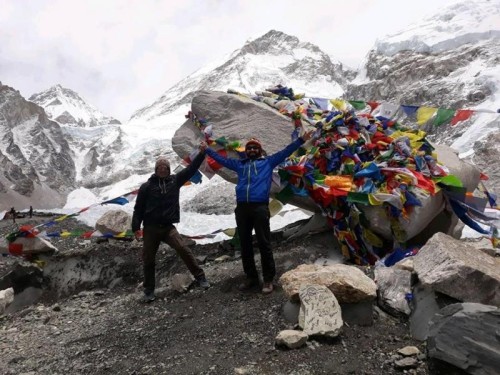
 USD 30
USD 30




Alessandra
Italy
Incredible Memories from the Langtang Valley Trek
12th June, 2025
I did the Langtang Valley Trek with my friends, and it was a great experience with our guide, Ganesh. The company pleasantly surprised us because it was the only one that offered us a quote for hiring just a guide, as we initially only wanted that. All the other agencies we contacted tried to sell us a full package.
In the end, we decided to go with the full package anyway—and it turned out to be the cheapest yet most complete option. This may have been due to the choice of more basic accommodations, but it brought us much closer to the authentic Nepali way of life. The company paid excellent attention to our trip and showed great flexibility with our changing plans. We were always given the freedom to choose the route, destinations, and stops.
Ganesh, our guide, was always supportive but also knew when to give us space, allowing us to enjoy moments of solitude as if we were trekking alone in the beautiful Nepali valleys. He had an incredible sense for understanding the different moods of our journey. We also shared some enjoyable, friendly moments together—at times it felt like we were traveling with a close friend.
Highly recommended!
Paolo
Italy
Langtang Valley Trek: A Remarkable and Rewarding Adventure
12th June, 2025
High Pass Adventure offers great flexibility in tailoring your Himalayan trekking experience in Nepal. The team behind this company is very open and accommodating, arranging the best options based on individual needs. This was perfect for us, as we normally travel as a duo and don’t usually hire guides.
We had the pleasure of sharing the Langtang Valley Trek with one of the company’s founders, who guided us all the way from Kathmandu to the summit of Kyangjin Ri, nearly 5,000 meters high. Early April turned out to be an excellent time for the trek—less crowded and with beautiful weather.
Ganesh, our guide, was a wonderful companion. More than just a guide, he shared stories and experiences with us, making the journey feel much more personal. He was always watchful and supportive while giving us the freedom to enjoy quiet moments on our own—striking the perfect balance between guidance and space. I highly recommend High Pass Adventure for the outstanding experience I had with their team. Their logistics and organization were flawless. Thank you!